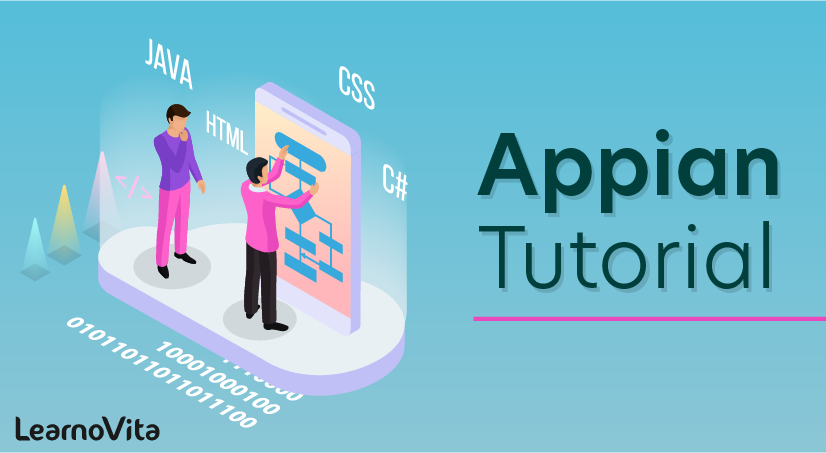
Appian Tutorial
Last updated on 29th Sep 2020, Blog, Tutorials
Appian is the BPM expert. Appian leads the market in BPM innovation, delivering comprehensive, flexible, and easy-to-use solutions tailored to the needs of businesses and governments worldwide.
The Appian Enterprise BPM Suite is a 100 percent Web-based solution, including integrated knowledge management and real-time analytics. Appian simplifies process collaboration between business and IT, allowing all users to be part of the process of achieving corporate goals.
Appian Anywhere, the first and only complete BPM Suite available on-demand, delivers all the power and functionality of Appian Enterprise via a Software-as-a-Service (SaaS) model.
Appian empowers more than 2.5 million users globally across government, financial services, healthcare, manufacturing, telecommunications, and other industries. Appian is headquartered in the Washington D.C. region, with professional services and partners around the globe.
This Appian tutorial gives you an overview of the basics of Appian. Appian is a BPM pro merchant: its BPM services and products are its center core interest. Appian centers its endeavors across government and business industry areas, including manufacturing, financial services, energy, healthcare, and retail. Appian’s BPM innovation offers two core items – Appian 6 and Appian Anywhere (which is facilitated, however, include an identical variant of Appian 6, propelled in 2007).
The innovative products are abnormal in the broad scope of abilities that they arrange and include the following terms:
- Content-Management
- Collaboration Facilities
- Real-time Analytics
- Process Management,
- Document Management,
- Portal
Subscribe For Free Demo
Error: Contact form not found.
On this fundamental platform, with a predictable arrangement of complete administration tools, web-based design, and development will be integrated.
Appian has likewise accomplished something that no other BPM innovation seller has yet pulled off. Because it has figured out how to uncover a considerable number of the specialized capacities executed in the platform. (remembering for its collaboration tools, document management, and content management, etc.) legitimately to process architects, making it workable for non-pros to rapidly characterize and convey process applications that show exceptionally complex and dynamic conduct. The consequence of this advancement is a contribution that gives reliable or extremely solid help over the entirety of our six procedure situations.
Recreation is the one area where Appian’s contributions do convey not exactly the advancements of its nearest rivals. In v6.0.2 Appian likewise fundamentally improves its capacity in the process revelation and prerequisites region, as well – just as meshing social group working abilities into the structure condition to assist groups with facilitating speed advancement and reinforce change of executives.
Product Summary
- Appian is the BPM master. Appian drives the market in BPM development, conveying complete, adaptable, and simple-to-utilize arrangements custom-made to the necessities of organizations and governments around the world.
- The Appian Enterprise BPM Suite is a 100 percent Web-based arrangement, including incorporated information on the board and constant investigation. Appian improves joint process effort among business and IT, permitting all clients to be a piece of the way toward accomplishing corporate objectives.
- Appian Anywhere, the sole total BPM Suite accessible on-request, conveys all the force and usefulness of Appian Enterprise utilizing a Software-as-a-Service (SaaS) model.
- Appian enables more than 2.5 million clients all around across government, money related administrations, social insurance, assembling, broadcast communications, and different enterprises. Appian is headquartered in the Washington D.C. district, with proficient administrations and accomplices around the world.
BPM Engine
Server Ecosystem
Appian BPMS stage works customary 3-level engineering with a web-server, java application server, and database server at each level. Every level in server engineering may work in a common physical condition or on remote physical servers. Appian is intended to scale straightly, permitting associations to grow a BPM activity from a little office to an endeavor comprehensive arrangement on a single stage.
IMAGE
User Components
All customer access to Appian segments by Process Designers, Forms Designers, Administrators, Executives, and End-Users is through an internet browser with no utilization of Active-X controls or Java Applets. Appian further gives a different SDK dependent on Java Eclipse for designers to make new questions and create combinations to outsider frameworks.
Web Services
Appian is the main item to connect the ideas of Service Oriented Architecture with business client control and structure of utilization rationale and business process stream. The most widely recognized portrayal of an SOA object in the market is a Web Service. Web Services are unusual and adaptable approaches to permit any application to reuse automatic rationale through a straightforward web interface rapidly. Yet, a Web Service is as however a complex automated API with WSDL definitions, information mappings, and pay that lone further developed IT clients realize how to convey appropriately. Appian presents another method of wrapping necessary SOA objects, for example, Web Services and Enterprise Java Beans (EJBs), into all the more handily comprehended Appian Smart Services. The Appian Smart Service is intended to exemplify the perplexing rationale, WSDL mappings, remunerations, and even GUI structure interface into a primary, reusable help object that can be comprehended and sent by progressively primary business clients.
This bundling of complex SOA API calls into Appian Smart Services gives the ideal harmony between IT authority over complex reconciliations and API corporations and business client power over procedure and business rationale. Also, Appian provides the foundation to an association to begin assembling a library of administration objects for quick organization and the board in processes and applications.
To quicken an association’s development of this administration library, Appian comes pre-populated with more than 85 procedure activities and more than 250 principle articulation activities to control all parts of events and rapidly make business rules. Besides, Appian incorporates a Java Eclipse structure condition for IT engineers to build and expand the library of Appian Smart Services rapidly.
Policies
- The Appian BPM Suite is conveyed as either a customer oversaw programming condition with Appian Enterprise or an on-request PaaS arrangement with Appian Anywhere.
- Appian Anywhere has no stage necessities as Appian oversees all parts. All entrance to the Appian Anywhere condition is furnished through an internet browser with no customer modules to introduce.
- Appian Enterprise underpins an assortment of J2EE and OS stages. For working frameworks, Appian bolsters Windows 2003 Server, IBM-AIX, Linux, and Sun Solaris. For the J2EE stages, Appian supports JBOSS, IBM WebSphere, and Oracle/BEA Application Server.
- For cutting edge improvement, Appian offers a Java Eclipse-based SDK. Every single other interface for process configuration, structures configuration, revealing, and end-client collaboration are given through an internet browser.
User Interface
Appian gives more to end-clients than only a straightforward inbox, be that as it may, instead, a total and adaptable condition for collaborating with, observing, and overseeing endeavor process applications. Appian’s flexible entry dashboards permit clients to squash together information components to convey through perspectives into a procedure. This tool may lead to incorporate errands records, method and undertaking execution, and even coordinated effort and report sharing territories. Also, Appian’s help for standard WSRP portlet utilization permits clients to join information from over any framework into a dashboard see.
Appian’s entrance condition is equipped for customizing and focusing on content dependent on rules, showing content from an assortment of sources, and empowering business clients to change format with basic point-and-snap methods rapidly. Appian can distinguish a particular client’s quality or job and feature select substance channel territories for review inside a dashboard. By blending a profound comprehension of a client’s role inside an organization with point by point process data, reports become increasingly powerful and content progressively necessary for settling on everyday procedure choices. Moreover, Appian can limit access to content at an assortment of levels. Entire dashboards, single substance channels, and even lines in a report can be made sure about to guarantee that lone clients with the correct access can see selected data.
Appian tool
Appian is a BPM application development tool. Where you can develop Business related Applications and solve complex workflows into simple workflows . The compitative tools for Appian BPM or PEGA BPM, IBM BPM and many more.
Appian cost
Appian pricing starts at $90.00 per month, per user.
Features and Benefits of Appian Applications:
Low Code Platform:
- Business requires an application at a minimum time and to achieve this, the development should be faster so that the code must be correct.
- Appian provides a shortcode environment that doesn’t require writing lengthy codes for each operation, instead, they can simply drag and drop components, create clear interfaces, APIs, powerful & fast integrations at least 10 times faster.
- Secondly, each developer code has their own expertise, some can write 30-40 lines in a simple DB connection code, some can be written in 10-15 lines, but Appian provides the most convenient built-in services, which greatly increases the performance of the application and increases productivity.
So, our main intention of Appian Training at Global Online Trainings is to create all new business applications with high-productivity toolsets such as low-code and no-code application development platforms.
Write Once Run Anywhere:
- WORA (Write Once, Run Anywhere) is a famous slogan to describe the benefits Appian Applications. This means that an application is developed on one device and is expected to be implemented on any other device.
- So that Appian users can start work on their desktop, process it on the tablet and complete it on their smartphone.Is it not good for customers to do their job without boundaries now? Yes, Appian is the wonderful platform. In that, the WORA model completely helps their users to do work without boundaries.
Process designing and configuration:
- Appian can convert the business workflows to executable processes automatically. Process models in Appian organize the intelligent automation in business applications.
- Appian bridges the gap between application analysts and application designers because using Appian’s process models a person can design a high-level process and simultaneously can configure the process as well.
Users Collaboration:
- A business progresses when its collaborative then Business user’s collaboration leads to effective decisions, fast resolutions, and quicker To achieve user’s collaboration Appian provides a centralized space called as “News” where co-workers collaborate and complete their work.
- News permits the users to check what’s happening within the company and take actions on relevant details. Users will post relevant business information on News and other users will read, comment on these posts. A user will subscribe & unsubscribe from the processes according to their needs.
Intuitive and easy to build User Interfaces:
- The application user always appreciates the beautiful, powerful & intuitive user interface. Modern UI design trends have been developed with the exception of improved usage and experience.
- Instead of improving the current techniques of creating UIs, Appian began with Scratch and came up with SAIL technology. Appian’s Sail (Self-Assembling Interface Layer) is a patented framework, which takes detailed UI definitions to produce dynamic, interactive and multi-platform user experience in appian orchestration.
- Appian’s low code is the best in the Principle, meaning designer drag n can be dropped in the interface canvas components, rather than code, which results in a reduced UI construction time of 10-20 times.
High-performance Appian engines:
- As I said that Appian is past but how is Appian fast means its answer lies in its highly optimized and lightning-fast processing engines.
- A default Appian environment is enclosed with 15 engines and can be extended to up to 73 engines (up to 18.3 versions) that process all information such as user interfaces, process models, data analytics, integration etc.
- Appian uses the most outgoing, low latency & most available tools like Apache Zookeeper & Apache Kafka to keep all business transactions in synchronization. We are best in providing Appian Training by experts from India.
Highly available system:
- A business application must have minimum possible downtime because an application downtime is inversely proportional to the productivity.
- When coming to Appian, it offers a highly available configuration which provides very low hardware and software failover.
Cloud & In premise architecture:
- Appian supports both cloud architecture as well as In premise Installation architecture to meet each and every customer’s demand. But in my view, it is best to choose cloud architecture.
- According to customer’s preference Appian can be installed on AWS (Amazon web services) cloud, Microsoft Azure & Google cloud and it supports installation on both Microsoft Windows and Linux operating systems.
Benefits Driven by Appian
Appian 7, the latest BPM software platform from the leading company, brings business process management to new levels with full integration of cloud, mobile and social initiatives together with the new self-assembling interface layer solution. With this new capability, which allows developers to deploy a process across multiple channels at once, ensures swift and efficient operations for developers in any industry, from IT to finance.
“Today, BPM needs to work with cloud, mobile and social, and leverage these new technologies to deliver customers a more flexible platform that lets them change processes to improve experience, improve results or simply get more insight about individual processes, customers and transactions,” Malcolm Ross, Appian’s vice president of product marketing, told Integration Developer News.
Ross’s stance on the necessity of integrating cloud, mobile and social into a single BPM solution is backed up by a recent Gartner report, which noted how these three technologies are essential for creating a technology-immersed environment due to their convergence “as a result of human behavior.” SAIL processes support this approach by ensuring that users can deploy their apps on any web browser and mobile device simultaneously, bringing cloud, mobile and social another step closer together.
The improvements provided with Appian 7 can be broken down to areas that all businesses need to focus on to ensure process growth and improvement – navigation, orchestration and collaboration.
Navigation
The ability to easily browse and search for data from a single access point is an essential factor in BPM success, and firms that invest in the right solution to deliver ease of navigation will better support employee productivity and efficiency by doing so.
Collaboration
The integration of enterprise social BPM strategies with the process management platform will ensure seamless integration of employees with all the data and processes they need to access in order to get their jobs done efficiently. This approach better supports other business initiatives as well, such as unified communication and collaboration and internal networking.
Process Orchestration
Scalable efficiency is another critical piece of the puzzle for businesses looking to optimize their workflow. By investing in tools that better support the integration of apps and processes together, companies can boost usability and ROI across the board.
The combined advantages of social, mobile and cloud BPM support expanded need for growth and opportunity in the workplace, and businesses can ill afford to miss out on these chances to improve.
Prerequisites
In order to successfully complete the installation steps below, several prerequisite steps must first be completed:
- Install Third-Party Software – The RDBMS must be installed prior to Appian installation. Obtain the appropriate JDBC Driver, which is used to connect to the RDBMS.
- Obtain the Temporary Product Licenses – A product license is required to start the Appian engines as well as the data server. To obtain a temporary product license follow Requesting and Installing a License.
- Set the Server System Locale – The system locale must be defined in order to install Appian. In most cases, the system locale setting will already be set correctly.
Appian Architecture
Appian is an enterprise software platform that includes core components that work with other systems (database server, mail server) to provide capabilities and services to users. The following diagram illustrates the components of a typical Appian installation in greater detail:

All core components of the Appian architecture can be configured to support backup/restore and failover for high availability. Since Appian depends on other systems it is equally important to ensure that all associated components are similarly configured for high availability and recovery.
The sections below walk through the Appian architecture to explain what each component does and how they interact as well as links to additional documentation resources.
Web/Mobile Client
Appian’s end user application interface is supported on all major web browsers and native mobile apps are available for the most popular platforms. The design interface which is used to build applications and the system administration console are also 100% web-based.
All web and mobile clients access Appian using HTTP/S. HTTPS is recommended for production installations. User-uploaded content and third-party extensions are hosted from two independent domains to prevent unintentional or insecure interaction with Appian interfaces. Minimal web browser configuration is required and Appian does not use browser extensions or plugins. Internal-facing Appian sites typically require the use of mobile VPN tools to enable mobile access from commercial cellular networks.
Web Server
As with most web applications Appian installations should use a web server to handle client requests before passing traffic to the application server. A web server can be used to handle static requests (images, css, etc.) which enables that content to be cached by client browsers for improved performance. Multiple web servers can be used with a load balancer. When using HTTPS a web server can remove the SSL overhead from the application server. Some deployments may also use an SSL accelerator (often combined with a load balancer) before traffic reaches the web server to further optimize HTTPS performance.
Requests for non-static content are passed through from the web server to the application server. The connection configuration between these components depends on which web and application server platforms are used. For example:
- Apache web server uses mod_jk to connect to Appian
- IIS web server uses the ISAPI Redirector DLL to connect to Appian
These methods of communication are not Appian-specific but do require Appian-specific configurations to control which types of content are served by each component and other settings.
Application Server
An application server is a multi-threaded execution environment for web applications and provides built-in support for connecting to a wide range of related system components. Appian requires Java 8 or higher.
The application server coordinates most of the interaction between system components and is responsible for a significant portion of Appian’s functionality.
The application server handles end-user web or mobile client requests that are passed through from the web server (including authentication and authorization for those requests). It retrieves and updates data in the Appian engines and the primary and business databases. It manages documents uploaded by users and generated by processes. It executes business rules, runs the activities defined in process models, and communicates with external systems. It can be extended using plug-ins deployed using the OSGi framework.
Because the application server is involved in such a significant amount of activity it is a central source of logging and other information about system usage, health, and performance. It also has a wide range of configuration options, most of which are managed in the custom.properties file or the administration console interface.
INSTALLATION
To install Appian:
1.Ensure that the <APPIAN_HOME> directory exists prior to executing the installer.
- Do not use the following characters in the name of your installation directory: & ^ = ( ) <space>
- Do not install Appian in a directory where another version of Appian is already installed. If you desire to use the same directory names, and are performing these steps as part of an upgrade, rename the older <APPIAN_HOME> directory before installing this one.
2.Double click on the installer.
- If you are using Windows 7, right-click the installer and select Run as administrator.
3.Click Next to step through the installer.
- The installer automatically puts Appian files in a default location unless you specify another directory.
- Optional: When you reach the Destination Folder option, click Browse, and then specify the desired location for the <APPIAN_HOME> directory. The installer automatically installs Appian in C:\appian unless you specify another directory.
4.Click Finish to close the installer.
5.Set JAVA_HOME and PATH Environment Variables
If you deploy the application suite on a virtual PC or virtual OS image, complete the following steps:
- Right-click the APPIAN_HOME directory.
- Select Properties.
- Select the Security tab.
- Verify that the user account that is to be used to start the application has Read & Execute and Write permissions for the folder.
Notwithstanding having the option to target substance to clients dependent on their job inside an organization, Appian is accessible in an assortment of dialects, permitting clients to team up across geologies and dialects. Appian’s interface buys into UNICODE compliance and supports all language types. Appian examines the client’s language setting and shows the entrance content in that client’s particular language.
Appian is the main undertaking BPM Suite to firmly coordinate the joint effort and entry capacities into a venture BPMS stage. Key highlights used to give powerful joint effort to incorporate Appian’s Discussion Forums, Portal dashboards, and Group Server abilities. These key highlights join to give dynamic and focused on working regions for group coordinated effort.
The Appian Discussion Forums permit clients to have strung discussions on any theme. Every theme can be related to content zones, and individual posts can be appraised for seriousness. Every discussion or theme can be focused on a particular arrangement of clients or gatherings, or they can be made accessible to the whole network. As conversations happen, Appian will file all conversation content and empower quick looking to assist clients with discovering answers to basic inquiries.
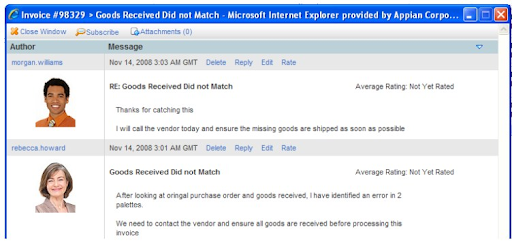
Appian for SharePoint is intended to broaden the capacities of your current Microsoft Office SharePoint Server 2007 entry with the endeavour BPM abilities offered by Appian. Utilizing Appian for SharePoint, clients can undoubtedly follow process execution, handle assignments, and heighten activities from their Microsoft SharePoint dashboard.

Appian Training
- Master Your Craft
- Lifetime LMS & Faculty Access
- 24/7 online expert support
- Real-world & Project Based Learning
Explore Curriculum
What’s more, Appian can bring process organization to the administration of destinations, envelopes, reports, and authorizations. Appian for SharePoint incorporates local help interfaces to control regular SharePoint activities in an organized procedure to encourage the programmed development and pulverization of SharePoint content.
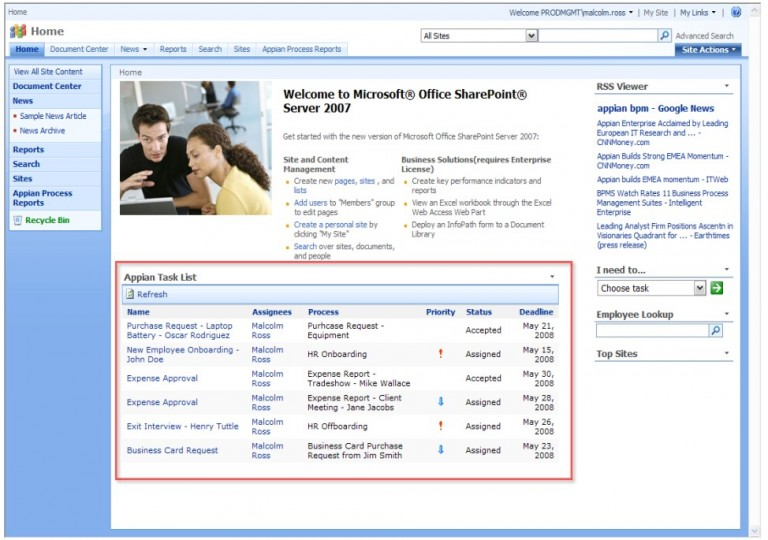
Scalability
Appian has been intended to work in the most requesting of big business conditions. With genuine organizations coming to more than 2 million clients in a solitary establishment, Appian has demonstrated to be the most dependable BPMS and application stage accessible. Appian routinely directs adaptability testing on an assortment of parts to guarantee appropriate execution before a client sends.
Fault tolerance, performance, disaster recovery, scalability, performance, fault tolerance, and disaster recovery are necessary attributes of any mission-critical system. Appian is an n-layered undertaking web application with a profoundly versatile and adaptable design. Since it is a segment based design, bits of Appian might be adjusted or improved depending on explicit execution prerequisites (e.g., throughput, simultaneousness, or reaction time) and the application, overall, can be a piece of an open and extensible genuinely conveyed arrangement.
Appian segments can be sensibly ordered into four significant territories – Process, Analytics, Content, and Collaboration. At least one committed motor server supports every one of these significant part zones with its utilization and adaptability designs. The specific execution and versatility of every client will rely upon the particular use situation of these major utilitarian regions.
Process
The Appian Process motor is intended to give the correct harmony among regulatory and IT control and adaptability for business clients to alter execution to deal with day by day process special cases in a profoundly versatile manner. Appian’s procedure execution condition is intended to be controlled and impacted by business clients who realize how procedures ought to execute and know the requirement no doubt – time reaction and control in re-steering forms. In any case, strengthening of business clients presents a test to IT presiding officers to guarantee business clients don’t hurt the framework with their changes. That change can be suited in a controlled and unsurprising way. Appian empowers this harmony among IT and business by empowering IT clients to set an assortment of edges and cutoff points on all parameters in their procedure execution condition. IT can change everything from default field sizes for content contributions as far as possible for rehashing exercises in forms. This point by point level of control on process conduct by Administrators is key in empowering business client strengthening while at the same time ensuring solid execution.
Appian furthermore scale tests the procedure motor all the time to guarantee superior in client executions. Appian test results have demonstrated that the procedure motor can give dependable exchange throughput as the quantity of dynamic procedure examples increments. Also, to oblige scaling into the huge volumes, Appian can convey numerous procedure motors to stack balance process work over various physical servers. In the realistic beneath, an exchange is characterized as the execution and fruition of one procedure hub, barring the beginning and end hubs.
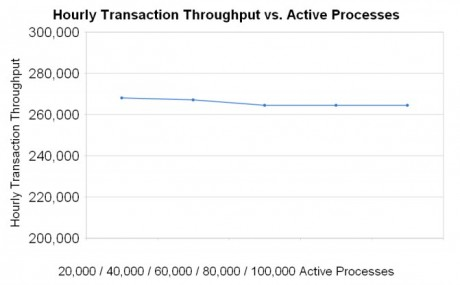
Analytics
The Appian examination interface furnishes the suite with a vigorous and adaptable revealing condition. Impromptu reports can be handily made and controlled by clients utilizing the out of the crate revealing condition local to Appian. To forestall server execution issues in excessively complex client produced reports, executives can set edges for report rendering times that will restrain the time it takes to render report sees. Execution results, included with each report execution, feature section by segment report rendering times, and suggestions for improving report execution. This harmony between client adaptability and executive control guarantees that the examination part keeps up an elevated level of execution dependent on client needs.
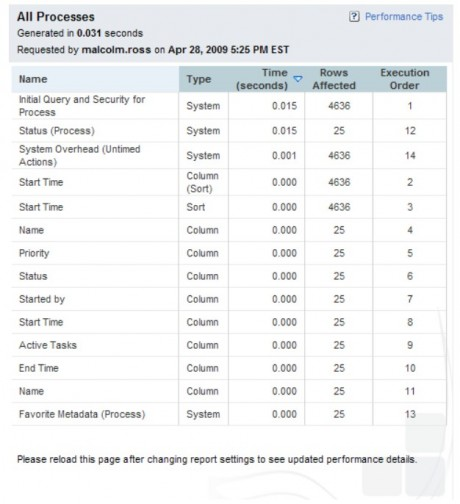
Appian moreover consistently tests report rendering times in an assortment of situations to guarantee top execution for clients. Test situations incorporate the stacking of countless procedures with several simultaneous clients seeing a typical report. Reports incorporate an assortment of information focuses and totals that reflect the run of the mill perspectives on reports for clients. The accompanying diagram shows how to report rendering time for a report across 100,000 procedures is negligibly influenced by an expansion in simultaneous client load.
Content
Appian’s substance part gives a report storeroom used to store and search records both inside and outside of the procedure. Appian’s archive storeroom is right now used to store as much as 11 million records of shifting sizes at one client, and use develops every day. Appian keeps up utilization measurements of the substance part at the archive level empowering further client understanding. The report the board office empowers clients to control default terminations of substance inside their stockpiling places, permitting robotized authority over dispensing with obsolete substance. Also, the substance part empowers full-content looking of substance inside Appian’s BPMS, confining outcomes to just those that a client can get. Appian’s BPMS works in a domain scaled for high utilization and execution of the substance segment at one of the biggest creation establishments of Appian BPMS.
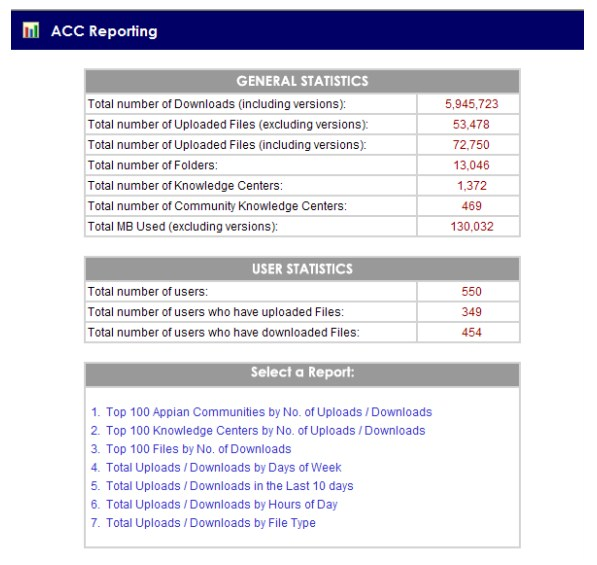
Collaboration
Appian’s coordinated effort part involves entryway pages and gatherings giving focus on work regions to clients to interface and team up inside the BPM Suite. The most significant establishments of Appian BPMS have more than 5,75,000 pages and 50,000 gatherings running in a solitary creation condition, including substantial utilization of rules-based gatherings. Like different segments, the coordinated effort part can be scaled as vital, contingent upon the client utilization of the joint effort highlighted. These establishments with overwhelming usage of the cooperation highlights have mounted the joint effort part to keep up execution as the establishment develops.
Subscribe To Our Youtube Channel To Get New Updates..!
Subscribe
Processing Modeling
The Appian Process Modeler permits thoughts to transform into useful procedure-based applications in record time while giving the knowledge into process measurements to improve process execution rapidly. The modeler permits business clients to record key business forms rapidly, investigate the administrations accessible over an association, and quickly assemble process-based composite applications. Conveyed in a 100% slight, online interface, the Appian Process Modeler depends on Business Process Modeling Notation (BPMN) norms and utilizes straightforward simplified interfaces for quick and simple procedure displaying.
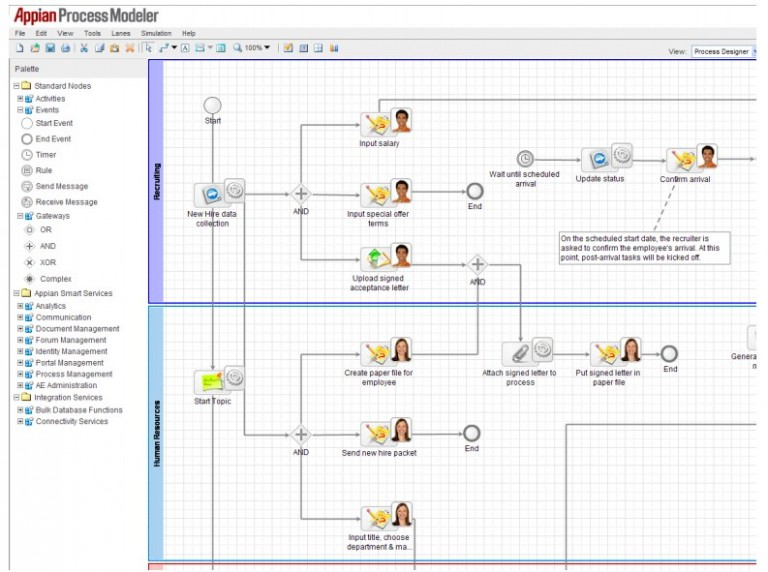
The Appian Process Modeler permits all fields to be made dynamic and decided at runtime. Fields, for example, assignments, deadlines, structure inputs, and different properties can use the Appian Expression Editor to utilize pre-characterized Appian Rules or runtime factors to manufacture totally powerful procedure models. Following are the various process models in this phase.
- Sub-Processes
- Shared Data Space
- Forms
- Time
- Process Optimization and Simulation
Business Rules
The Appian Rules condition empowers clients to make a focal store of reusable business rules to be utilized over the association. Each standard gets controlled, permitting select clients to change singular guidelines. As rules are changed, new forms of the standard are made, and more established variants are put away for authentic reference. Rules inside Appian go a long way past straightforward choice rationale in a procedure step. Appian rules might be applied to any frame component, process trait, report, or even gathering participation. A standard can control how the substance is rendered in a report or a structure, as progressively decide the correct way of a procedure.
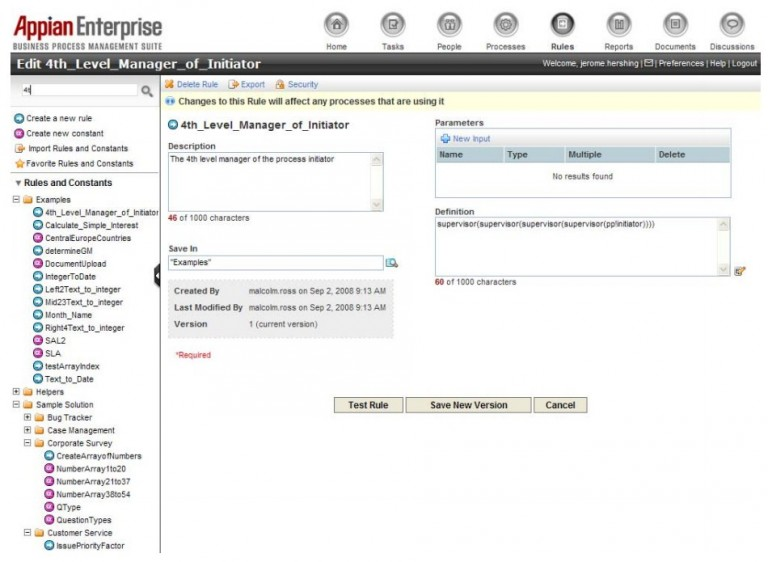
Integration
Besides web administrations, Appian further incorporates local connectors for normal interfaces, including social databases (RDBMS) and java informing administration (JMS). Appian likewise contains a lot of mixed devices that stretch out Appian’s API to coordinate Application-layer rationale and information with outer frameworks, including AS/400, Peoplesoft, SAP, Microsoft, and Oracle. Appian’s Integrated Development Environment (IDE) and related apparatuses encourage custom joining and improvement while Appian’s web administrations interface helps designers freely couple Appian with outside applications. When created, these interfaces can be utilized legitimately inside the Appian Process Modeler as Appian Smart Services for business client organization of the reconciliation in a procedure.
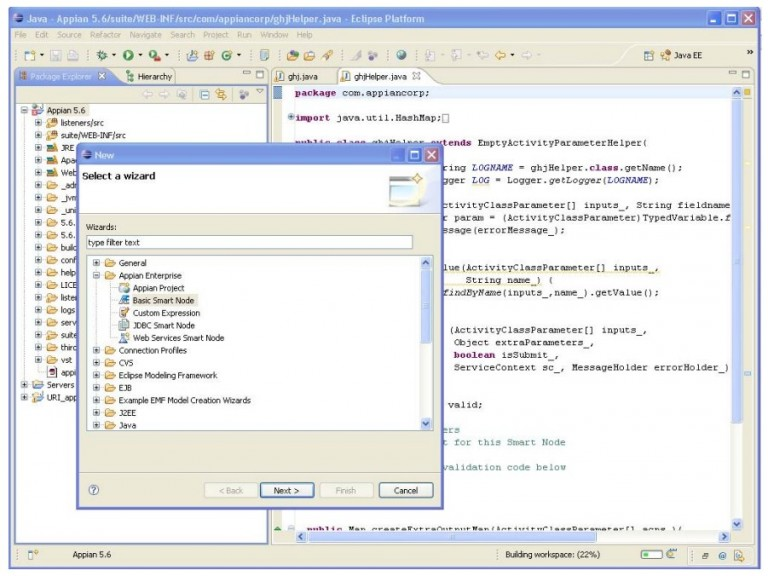
Organizational Structure
Appian gives a total authoritative display device permitting executives and clients to make specially appointed groups, progressive association structures, and client jobs for use over the stage. Every hierarchical model can be imported from basic catalog structures like Microsoft Active Directory and LDAP. Appian additionally furnishes dynamic hierarchical demonstrating capacities with the Appian Groups Server.
The Appian Groups Server is an incorporated element of the Appian BPM suite that empowers overseers and supervisors to oversee security and gatherings effectively and flawlessly in the developing BPM condition. As new clients enter the framework or change position, properties, gatherings, jobs, and security, all must be refreshed to guarantee legitimate undertaking tasks and securities. Appian rearranges the organization of gatherings and jobs with a unique guideline-based framework. Managers can set up an assortment of gathering types in Appian that incorporate broadened bunch traits, open and private gatherings, rule-based gathering participation, and dynamic guideline-based gathering chains of importance. Rule-based participation and chains of importance permit gatherings to self regulate as a client and gathering properties change. The Appian Groups Server spares innumerable hours for directors and chiefs staying aware of day by day staff changes over an association.
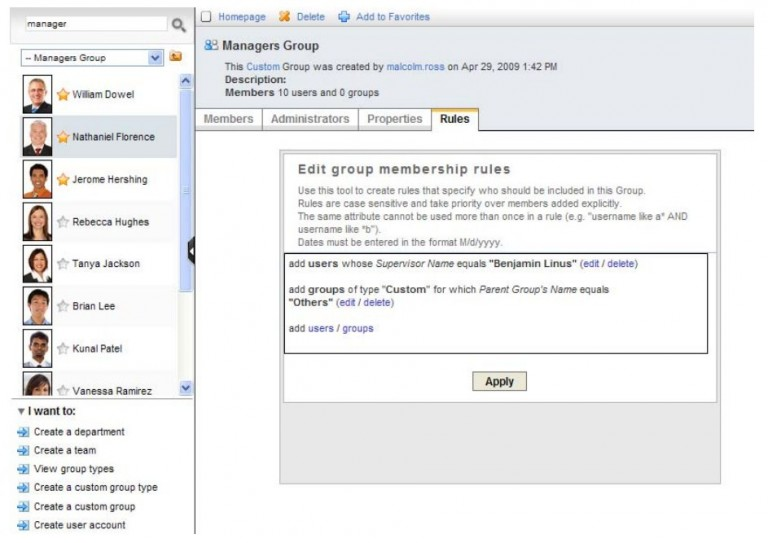
Process Adaptability
Appian permits procedures to be adjusted “in-flight” and to adapt to process changes during runtime. Procedure proprietors can open and alter in-flight forms as they are running, change process information, powerfully actuate and drop errands, trigger accelerations, and trigger occasions. Running procedures would now be able to be changed to incorporate these new activities and steps, as have these activities influence any future processes. No downloads are required; nor is any mind-boggling scripting or coding required to change forms in flight. After sparing the changes, the client can pick whether to apply the change to the individual procedures or update the procedure model, driving different processes likewise to embrace the change.
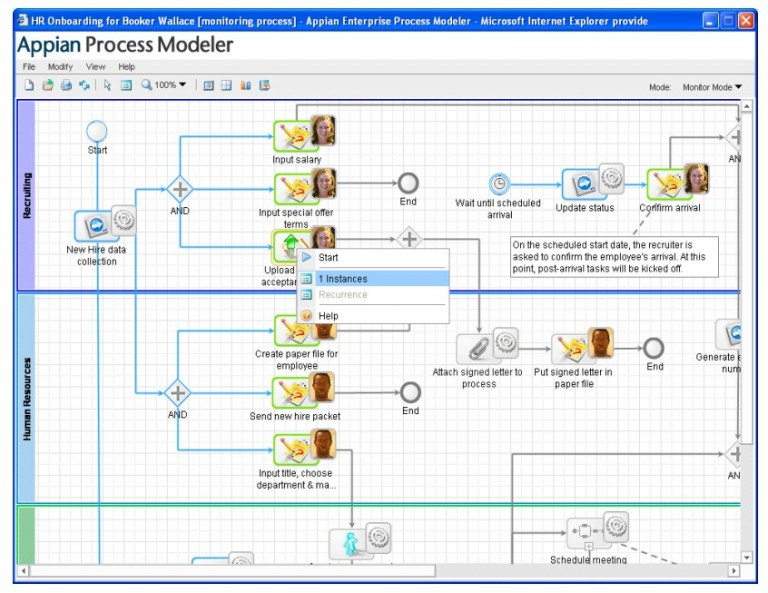
Process Lifecycle Management
Appian gives a total stage to Design, Execute, Manage, and Optimize business procedures to accomplish results quickly. The Appian BPMS stage gives capacities important to promptly assemble and send new procedure models, screen their productivity, advance activities, and embrace changes. These highlights incorporate
- Local variant control of Process Models and Rules
- Relocation of Processes between Systems
- Continuous Analytics of Process Performance
- Bottleneck Analysis and Optimization of Process Efficiency
- In-flight adjustment to embrace changes
Monitoring, Measurement, and Management Information
Appian’s coordinated investigation usefulness gives associations complete perceivable into key business activities, making it simpler to foresee patterns, issues, and openings, and to respond likewise. With Appian’s constant examination, announcing dashboards, and Business Activity Monitoring abilities, associations, can
- Improve authority over essential procedures with customized dashboard announcing, warnings, and alarms
- Quicken reaction to change by powerfully re-directing procedures dependent on continuous execution data
- Rapidly recognize process bottlenecks and enhance business process execution.
- Build up a culture of nonstop procedure improvement
Appian gives constant, the dynamic examination on all procedure-related information in the framework that is altogether configurable through an online interface. Appian catches both key business measurements just as procedure execution information for conglomeration into itemized report sees. Report fashioners may total and channel information utilizing business information to give new understanding into process execution. For instance, past observing straightforward assignment execution, report architects can aggregate errand execution measurements dependent on values caught in the process, for example, a keys provider or cost. This adaptable announcing condition empowers originators to perceive how to process execution rapidly is affected by the substance and business information coursing through each procedure.
Report dashboards in Appian give chiefs the capacity to observe ongoing execution overall activities rapidly. Each report is customized to the particular clients, giving a special view dependent on their entrance to processing data and the format of each report. Reports might be shown in an assortment of configurations, including plain, pie graph, bar outline, and the sky’s the limit from there. Each report can be immediately flipped between perspectives to increase new knowledge into report information. Key Performance Indicators may likewise be covered on graphical reports or shown as graphical pointers in even reports. At last, for moment coordinated effort around a report, report proprietors may decide to trade a report to MS Excel design or send the report in an email to another client straightforwardly from the report interface.
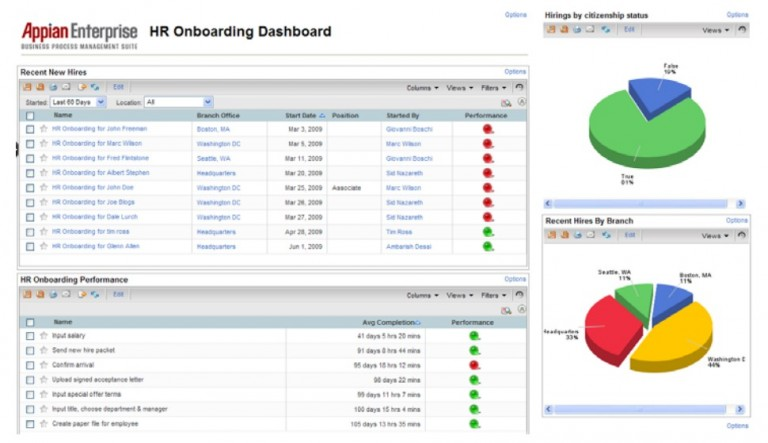
Appian catches definite Business Activity Monitoring (BAM) execution information over all exercises finished in the Appian procedure condition. Appian BAM execution information can be shown in the graphical reports talked about already, yet they can likewise be shown straightforwardly inside the Appian Process Modeler. This extraordinary view permits process proprietors to see constant and verifiable execution data while checking or altering a procedure. Bottlenecks and procedure wasteful aspects can be immediately recognized, and remedial activity has taken quickly inside the electronic procedure displaying condition.
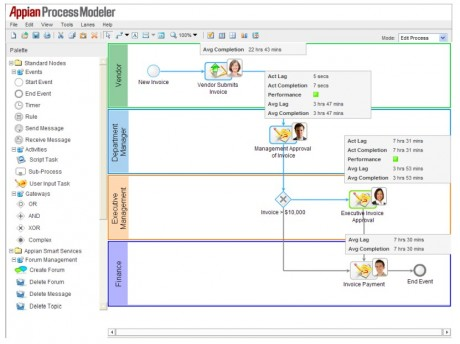
Templates and Structures
Appian, alongside Appian’s worldwide accomplice arrangement, gives various free and for buy process formats to kick off a client’s BPM activity. These incorporate layouts for the accompanying regions:
Government
- HR Hiring and Onboarding
- Acquisition and Procurement
- Personnel Actions
General Operations
- Compliance and Risk Management
- HR Hiring / Onboarding / Offboarding
- Time Tracking
- Project Management
- IT Service Request Management
- Marketing Service Request Management
- Accounts Payable
- Accounts Receivable
- Meeting and General Task Management
Financial Services
- Customer Relationship Management – Wealth Management
- Financial Risk Assessment
Manufacturing
- Sales Quoting
- Product Development Review and Approval
- Safety Compliance
Appian process formats are intended to kick off a procedure activity into select practice territories. Procedure formats depend on Appian’s and Appian accomplices’ long periods of involvement with improving normal procedure challenges and using industry best practices for mechanizing each procedure.
Vendor
Appian is the BPM master. Appian drives the market in BPM development, conveying complete, adaptable, and simple-to-utilize arrangements custom-made to the necessities of organizations and governments around the world.
Appian engages more than 2.5 million clients comprehensively across government, monetary administrations, social insurance, assembling, broadcast communications, and different ventures. Appian was established in 1999 and is headquartered in the Washington D.C. locale, with proficient administrations and accomplices around the world. Appian is a secretly held organization with more than 200 workers and a worldwide accomplice system of talented BPM experts.
Cost
The Appian BPM Suite is accessible as either a customer oversaw undertaking arrangement as Appian Enterprise, or as an on-request SaaS arrangement as Appian Anywhere.
Appian Enterprise is accessible to customers in either for every client or per-CPU valuing with limits on higher volumes or clients or CPUs. Estimating alternatives are accessible for clients at all levels, from low valuing for Small and Medium Business or individual divisions to enormous undertaking evaluating supporting a procedure change activity for a large number of clients.
Appian Anywhere is accessible at as low as $35 per-client/per-month. Appian Anywhere is accessible at a passage level Standard release for clients hoping to begin rapidly with a total BPMS stage, or at a Premium version, for those clients that require an additional degree of security and dependability. Usefulness is the equivalent in both Standard and Premium releases with the Premium version offering an extra 99.5% uptime assurance and SAS-70 Type II IT reviews for consistency purposes.
Conclusion
I hope this Appian tutorial was informative for you. Our Appian tutorial intended to give you an insight into the basic terms, product, Business Process Management Engine, Integration of the products, and many more things. In case you find anything challenging to grasp, do write back to us, our experts will clarify your doubts and queries.
Are you looking training with Right Jobs?
Contact Us- PowerApps Tutorial
- Salesforce Tutorial
- ServiceNow Tutorial
- Oracle Apex Tutorial
- Appian Interview Questions and Answers
Related Articles
Popular Courses
- ServiceNow Training
11025 Learners - Salesforce Training
12022 Learners - Pega Training
11141 Learners
- What is Dimension Reduction? | Know the techniques
- Difference between Data Lake vs Data Warehouse: A Complete Guide For Beginners with Best Practices
- What is Dimension Reduction? | Know the techniques
- What does the Yield keyword do and How to use Yield in python ? [ OverView ]
- Agile Sprint Planning | Everything You Need to Know

